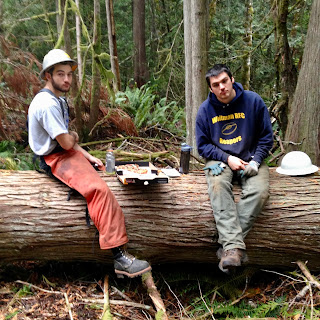Growing roses from seed is a fun project I've been working on for almost a year now. It's an interesting process, unless you don't find this type of thing interesting.
The first step is to gather mature rose hips, which contain the seeds. Roses are very diverse - there is no way to know for sure if a hip is ripe or how many seeds, if any, it holds. Generally the bigger and more colorful, the better.
 |
| These hips were pretty ugly. Best to worst from L to R based on ripeness and assumed seed content. |
Once you have some hips cut them open and remove the seeds. Then put the seeds in a small jar of sterile dirt and leave them in the refrigerator for a couple months. This step is called stratification. It mimics winter. This period of cold temperature is essential for roses, along with many other flowers. Although some seeds will sprout without this step, it greatly improves the odds.
Smart and/or lazy people would ask, "why not just use the actual winter?" It's a good point. I think that if you live in an area with cold winters you could just leave the hips on the plant. Maybe you should bring them inside to hide them from people like me.
 |
| This is the mother plant that provided the hips I used. Pink and fragrant. |
Once winter (real or artificial) is over, plant the seeds in some rich, well drained soil and start waiting. Sprouts will come up anytime in the next few weeks. Or months. Or years. Or never. Roses are very finicky and have been bred for years with a focus on form, color, and scent, not germination and healthy growth. Unlike vegetable seeds, they do not behave well. It is best to be patient or distract yourself with other projects.
 |
A bad photo of the young rose's first flower:
pale pink, lightly fragrant, and only 5 petals. |
From my first batch of semi-ripe hips I gathered about 20 seeds, one of which sprouted. I hope for better odds next time.
The good news is that most roses will flower about a month after they sprout. The first flowers have less color, less fragrance, and fewer petals than they will when they are adults. This makes the first bloom pretty disappointing, but also means that every flower produced will be better than the last.
 |
But wow, look at that! Yellow anthers with black
borders on red stamens. Now we're getting somewhere. |
 The second flower shows more petals, but is messy
The second flower shows more petals, but is messy
and misshapen. Still only a hint of fragrance.
Well, that was year one of the project. Just one rose to show for it, but maybe it will really hit its stride in its second year. Next year I'll be growing more roses from hips I find, and well as some that I specifically bred by taking pollen from one rose and fertilizing a different rose variety.
If you want to give it a try, I would start eyeing some rose hips in your neighborhood. They should be ripe soon. Happy gardening.
-Ben




















